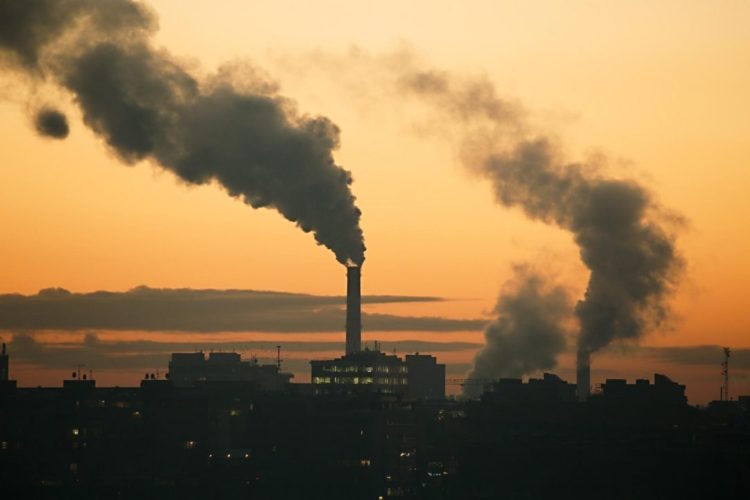In the most dire warning of what the consequences will be if the nations of the world don’t reduce their greenhouse gas emissions drastically and urgently, the Intergovernmental Panel on Climate Change (IPCC) released its 3 900-plus page report, entitled Climate Change 2021: the Physical Science Basis, on 9 August.
The report constitutes the first installment of a total assessment that will be completed next year.
According to the report, scientists are observing changes in the earth’s climate in every region and across the whole climate system.
Many of the changes observed in the climate are unprecedented in thousands, if not hundreds of thousands of years, and some of the changes already set in motion ~ such as continued sea level rise ~ are irreversible over hundreds to thousands of years, says the report.
However, strong and sustained reductions in emissions of carbon dioxide (CO2) and other greenhouse gases would limit climate change.
While benefits for air quality if this were to happen would come quickly, it could take 20 to 30 years to see global temperatures stabilise.
Greenhouse Gases
The report provides new estimates of the chances of crossing the internationally-agreed ceiling on global warming of 1.5°C in the next decades, and finds that unless there are immediate, rapid and large-scale reductions in greenhouse gas emissions, limiting warming to close to 1.5°C or even 2°C will be beyond reach. In layman’s terms, the report says that to not exceed the 1.5°C ceiling, greenhouse gas emissions must peak around the middle of this decade, in only four or five years’ time. In other words, total emissions of greenhouse gases worldwide must begin to decline after 2025 or 2026 for the ceiling not to be breached.
The report shows that emissions of greenhouse gases from human activities are responsible for approximately 1.1°C of warming from 1850 to 1900. Comparatively, averaged over the next 20 years from today, global temperature increase is expected to reach or exceed 1.5°C of warming.
The report points out that the effects of climate change are already being felt all around the globe, and it is not just about increasing temperature. Some of the changes already being experienced, and which will be experienced with more severity and frequency in future, include:
- An intensified water cycle. This brings more intense rainfall and associated flooding, as well as more intense drought in many regions.
- Changed rainfall patterns. In high latitudes, precipitation is likely to increase, while it is projected to decrease over large parts of the subtropics.
- Coastal areas will see continued sea level rise throughout the 21st century, contributing to more frequent and severe coastal flooding in low-lying areas and coastal erosion. Extreme sea level events that previously occurred once in 100 years could happen every year by the end of this century.
- Further warming will amplify permafrost thawing, and the loss of seasonal snow cover, melting of glaciers and ice sheets, and loss of summer Arctic sea ice.
- Changes to the ocean, including warming, more frequent marine heatwaves, ocean acidification, and reduced oxygen levels have been clearly linked to human influence. These changes affect both ocean ecosystems and the people that rely on them, and they will continue throughout at least the rest of this century.
- For cities, some aspects of climate change may be amplified, including heat (since urban areas are usually warmer than their surroundings), flooding from heavy precipitation events and sea level rise in coastal cities.
Southern Africa
In Africa, and particularly southern Africa, two different scenarios play out, assuming a temperature increase of 2°C.
In the western half of southern Africa, which includes, roughly, Namibia, western Botswana, and Angola (as well as the western, southern and northern Cape), these changes include:
- An already observed decrease in average precipitation;
- An already observed increase in heavy precipitation and flooding;
- An already observed increase in aridity, agricultural and ecological droughts, which the reports will become worse in time;
- A projected increase in dryness from 1.5°C, which will become worse with increasing global warming;
- A projected increases in mean wind speed; and increases in fire weather conditions.
For eastern Southern Africa, which includes the rest of South Africa, Mozambique, Zimbabwe, Zambia and southern Malawi, the changes will include:
- An already observed decrease in average rainfall;
- Already observed increases in heavy precipitation and flooding, which is projected to become worse over time;
- Already observed increases in aridity, agricultural and ecological droughts, also projected to worsen over time;
- An already observed increase in meteorological drought, and a projected increase from 1.5°C onwards;
- Projected increases in fire weather conditions; increases in mean wind speed; increase of average tropical cyclone wind speeds and associated heavy precipitation and of the proportion of category 4-5 tropical cyclones.
To access the full IPCC report, click here.


